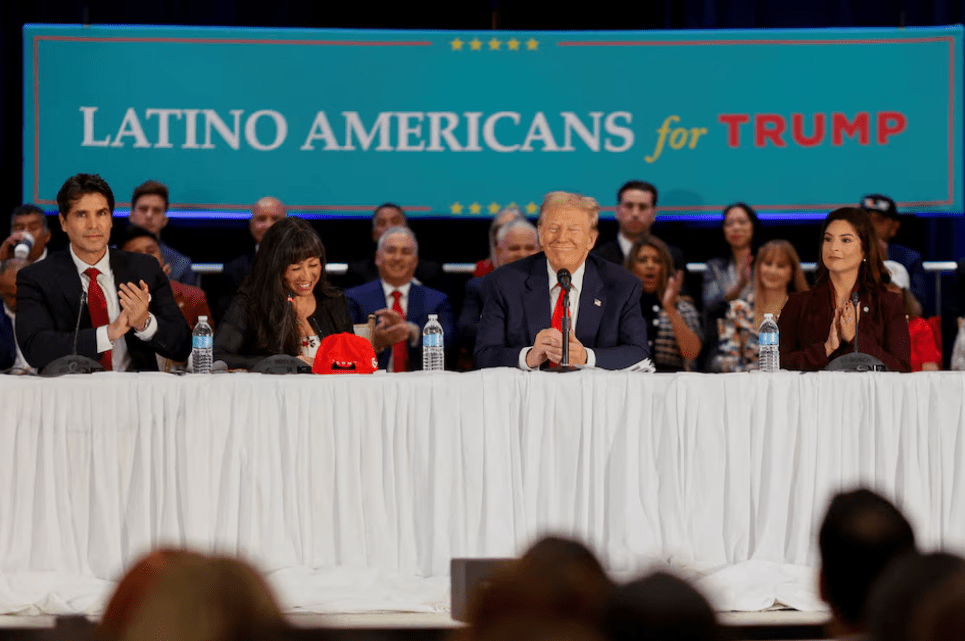On his first day in office, Donald Trump launched his second term with a barrage of executive orders. Unsurprisingly, many could have a major impact on Mexico, which shares a 3,145-kilometre border with the US and more than 200 years of diplomatic and economic ties.
Yet, this deep interdependence has not stopped Trump from making Mexico a prime target of his divisive political rhetoric.
He entered the public arena in 2015 by condemning Mexicans as dangerous “rapists” and criminals who were “bringing drugs” into the US. He also vowed to build “a great, great wall” along the border – one he claimed Mexico would pay for – to stop undocumented immigrants.
During his second presidential campaign, Trump doubled down on his anti-Mexico rhetoric and agenda. He threatened mass deportations of undocumented migrants residing in the US, sweeping tariffs of over 200% on Mexican vehicle imports and sending special forces into Mexico to attack drug cartels.

Trump’s executive orders are now putting these threats into action. Among the most concerning:
- designating migrant crossings as a national emergency
- directing the military to prioritise sealing the Mexico-US border
- reinstating the “Remain in Mexico” policy, which would require asylum seekers to stay in Mexico while their claims are assessed
- starting the process to designate drug cartels as terrorist organisations, and
- enacting new tariffs on Mexican imports.
Though largely symbolic, the order to rename the Gulf of Mexico as the “Gulf of America” further strains bilateral relations.
Given this focus, Trump’s long shadow will loom over Mexican President Claudia Sheinbaum’s own time in office. She will have to navigate his hostility while tackling domestic challenges, including a controversial judicial reform plan and relentless violence.
She has responded to Trump’s actions with measured remarks so far:
We have to avoid confrontations […] At the same time, we have to behave as equals, never subordinate. Defend our sovereignty, our independence and defend Mexicans.
After declaring Mexican cartels to be foreign terror organizations, President Trump is asked if he'd send U.S. Special Forces to Mexico to take them out.
"Could happen," he says. "Stranger things have happened." pic.twitter.com/clxslKpzKk
— CBS News (@CBSNews) January 21, 2025
A heavily securitised border
Trump’s declaration of a national emergency allows him to deploy the military to the border and continue building a border wall without Congressional approval. He could also enact measures to expand detention facilities, transportation (including aircraft) and other logistical support for law enforcement.
Illegal border crossings actually declined dramatically in 2024. This was, in part, due to steps Mexican authorities have taken to stop migrants attempting to reach the US.
Mexican authorities reported detaining over 475,000 migrants in the last quarter of 2024 — nearly 68% more than in the same period a year earlier.
Despite these efforts – which have drawn criticism for human rights groups – Trump has labelled migrant crossings an “invasion.”
This belligerent rhetoric is dangerous, as an invasion implies military aggression.
Indeed, Trump’s executive order authorises the deployment of US troops on the border, though details are thin. He could seek the assistance of the National Guard, a state-based military force made up of civilian soldiers. US law, however, prohibits the use of regular military forces on domestic soil.
In any case, Mexico serves as a stark example of why using the military for law enforcement is unwise. More than a decade of data shows that military involvement fails to encourage lawful behaviour and instead fuels corruption and violence.
Prospects for unilateral military action
Trump has also initiated the process to designate Mexican drug cartels as terrorist organisations – an action Mexico has long opposed.
Combined with his directive for the US secretary of defence to halt “the unimpeded flow of opiates” across the Mexico-US border, this could ultimately lead to US military action against organised crime in Mexico.
Sheinbaum responded by reaffirming Mexico’s sovereignty. She noted that while the US can act within its territory, Mexico remains an independent state.
In a letter to Trump last November, she highlighted that in 2024, Mexican law enforcement seized 10,340 weapons and arrested 15,640 people for drug-related violence. She also correctly pointed out that Mexico neither produces weapons, nor has a national public health crisis linked to synthetic drugs like fentanyl.
Yet, she lamented that Mexicans “bear the brunt of the deaths caused by crime” driven by the demand for drugs north of the border.
Any unilateral US military action inside Mexico could seriously imperil relations between the two neighbours.
The last time the US seriously considered military action against Mexico was in 1927, when Mexico enacted petroleum and land laws that affected American interests. Since then, the relationship has had its ups and downs, but has never involved military force.
And these kinds of threats could have ripple effects across Latin America. As former Colombian President Ernesto Samper has warned, an intervention in Mexico could spark a “Vietnam syndrome” of anti-American sentiment throughout the region.
Tariffs will hurt both sides
In addition, Trump has vowed to impose 25% tariffs on Mexico and Canada starting on February 1.
Such tariffs, however, could not be implemented without also hurting US industries.
Mexico overtook China as the US’s top trading partner in 2023, with bilateral trade reaching US$807 billion (A$1.2 trillion). Mexico’s economy relies heavily on trade, with 83% of exports destined for the US.
In return, Mexico’s direct investments in the US totalled US$33.8 billion (A$54 billion) in 2022 – an impressive 21.5% increase over the previous year.
The Mexican and US economies are tightly intertwined. If Trump imposes tariffs on Mexican beer, for example, he will also be imposing them on barley from Idaho, Montana and North Dakota that’s used to make the beer.
Sheinbaum has accurately warned Trump that tariffs are not just unacceptable under the United States–Mexico–Canada Agreement – they will also result in “inflation and job losses” across both the US and Mexico.
A relationship on the rocks?
Sheinbaum has advised Mexicans to “keep their heads cool”.
But as Trump continues to exert pressure on Mexico, it will become increasingly difficult for her to convince the Mexican public of the benefits of maintaining a cooperative relationship with the US.
The potential deterioration of relations between Mexico and the US could signal a new era in which brute force, paradoxically, will diminish American influence in the international community.

